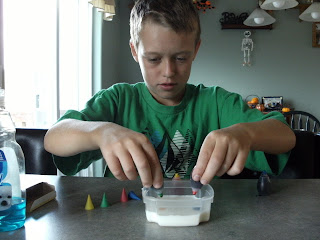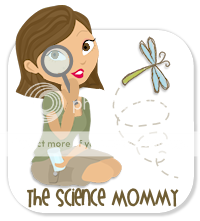Ages: This is great for all ages of Kid Scientist. If you have a curious Big Kid scientist, read ahead for the extension.
Materials: black construction paper, snow, magnifying lens (if you have one)
Procedure: This activity works well when it's snowing softly...but creative Kid Scientists will be able to collect snowflakes any time
Collect Them:
- Use your black paper to collect falling snowflakes
- If there are too many snowflakes to see clearly, try blowing gently to spread them out
- You can also sprinkle snow onto your black paper if it's not currently snowing
Explore Them:
Once you have your snowflakes, spend some time examining them...
- How would you describe the shape of the snowflakes?
- How many different snow flakes do you see?
- What size are your snowflakes? Are they all the same size?
- What else do you notice?
- What are you wondering about snowflakes?
Parents and curious Kid Scientists can explore this great snowflake website to learn more about how snowflakes form. There are also some amazing pictures like this one...
For Big Kid Scientists: Based on the website linked above, the Science Mommy wrote an article about snowflakes for Big Kid Scientists. I would share this with my Kid Scientists after the collected snowflakes and spent some time examining their collection. You can get this article about snowflakes by clicking on the link.
































